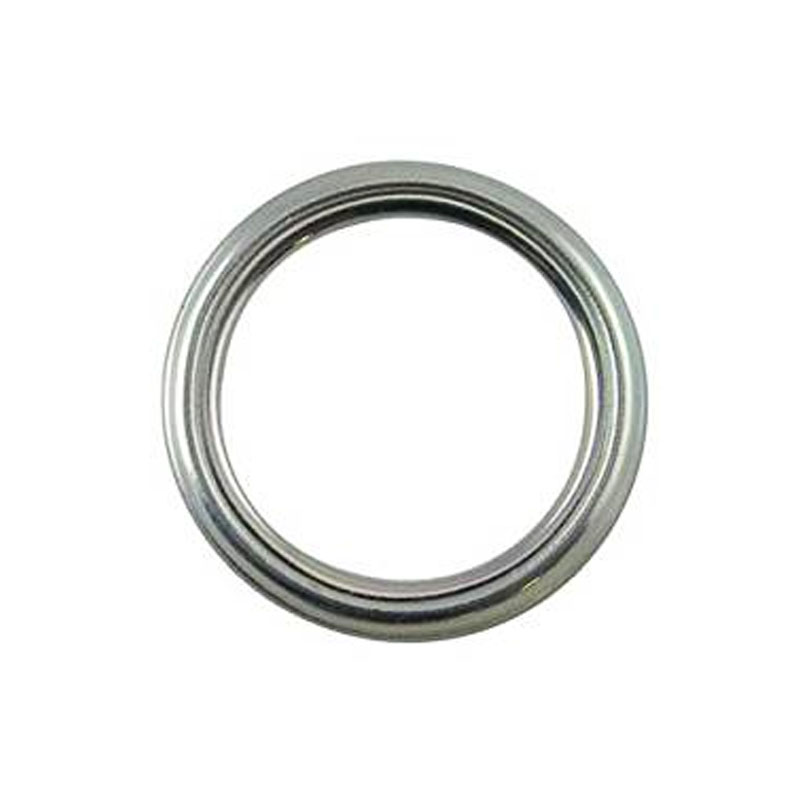Selecting Oil Seals Based on Dimensional Specifications for Optimal Performance
Understanding Oil Seals by Dimension A Comprehensive Overview
Oil seals, commonly referred to as radial shaft seals, play a crucial role in various mechanical systems. Their primary function is to retain lubricants and exclude contaminants from entering machinery, which is essential for ensuring the longevity and efficiency of moving parts. When it comes to selecting the appropriate oil seal, one of the most critical factors is the dimension of the seal. This article delves into the importance of dimensions in oil seals, how to measure them, and the implications of dimensional choices in practical applications.
The Importance of Dimensions
The dimensions of an oil seal are fundamental to its performance. The most critical measurements include the inner diameter (ID), outer diameter (OD), and the width of the seal. These measurements are crucial as they determine how well the seal can fit into a designated groove, creating the necessary contact surfaces for sealing.
1. Inner Diameter (ID) This is the diameter of the hole where the seal will be mounted around a shaft. An appropriate ID ensures a tight fit without excessive force during installation, which could lead to deformation or damage to the seal.
2. Outer Diameter (OD) The OD is the diameter of the seal that interfaces with the housing. A proper OD is crucial for effective sealing on the outer edge, preventing fluids from leaking past the seal and into the environment.
3. Width of the Seal This dimension is essential for accommodating the manufacturing tolerances of the assembly. An oil seal that is too wide or too narrow can affect the sealing operation, leading to seal failure or inefficient performance.
How to Measure Oil Seal Dimensions
Measuring the dimensions for oil seals involves using precise measuring tools, such as calipers or micrometers. Here’s a simple approach to accurately measure oil seal dimensions
1. Measuring the Inner Diameter Use a pair of calipers to measure the inner edge of the oil seal. Ensure the calipers are perpendicular to the fitting to avoid errors.
oil seal by dimension

3. Measuring the Width The width can be measured using a micrometer or calipers by placing the tool across the sealing lip to the opposite edge.
Selecting the Right Dimensions
Choosing the right dimensions for an oil seal is crucial and varies based on the specific application. Here are some key considerations
- Compatibility with Machinery Different machines have specific requirements for oil seals, so it is vital to consult the machinery's specifications and follow manufacturer recommendations.
- Operating Conditions Consider the operating temperature, pressure, and the type of lubricant involved. High temperatures may require seals made from materials like fluorocarbon, while standard applications might only need nitrile rubber seals.
- Tolerance Levels Understand the permissible tolerances in the assembly where the oil seal will be installed. Excessive play can lead to leaks, while too tight a fit can hinder rotation or damage the seal.
Conclusion
Oil seals are indispensable components that affect the integrity and efficiency of mechanical systems. When selecting an oil seal, paying attention to the seal's dimensions—inner diameter, outer diameter, and width—is paramount. Accurate measurements and careful consideration of application-specific requirements ultimately lead to the selection of the most appropriate oil seal. With a proper understanding of these dimensions, engineers and technicians can ensure optimal sealing performance, reduce maintenance costs, and enhance the operational life of machinery. In an era where efficiency and reliability are crucial in industrial operations, the importance of correctly dimensioned oil seals cannot be overstated. Always remember, the right seal for the right job ensures smoother operations and minimized downtime.
-
The Ultimate Guide to Boat Propeller Bearings and Trailer Wheel Bearings
News Jul.31,2025
-
The Essential Guide to Marine Bearings and Boat Trailer Wheel Bearings
News Jul.31,2025
-
The Complete Guide to Heavy Duty Seals: Protecting Doors and Spaces Efficiently
News Jul.31,2025
-
Essential Guide to Marine Shaft Bearings and Boat Trailer Axle Bearings
News Jul.31,2025
-
Comprehensive Guide to Marine and Trailer Bearings for Safe Boating and Transport
News Jul.31,2025
-
Comprehensive Guide to Automotive Oil Seals: Protecting Your Engine and Shafts
News Jul.31,2025
-
Understanding Automotive Oil Seals: Essential Components for Engine and Shaft Protection
News Jul.30,2025
Products categories















